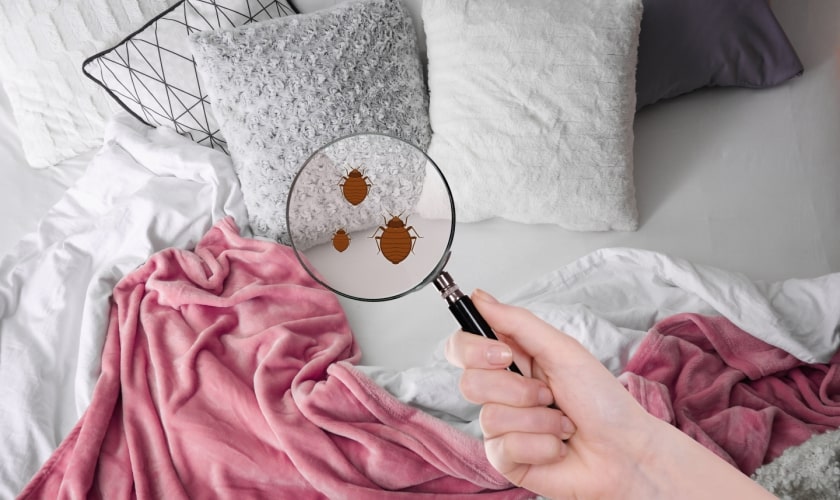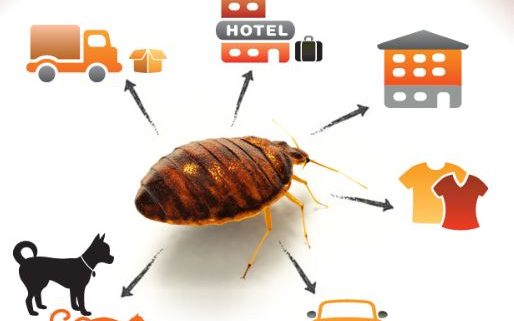Sorts Of Insect Control: Which Technique Is Right for Your Problem?
When faced with a bug problem, the option of an appropriate technique for bug control is critical in effectively handling the circumstance. From chemical therapies to organic remedies, there exists a series of strategies that can be employed to deal with different types of insects. Each technique includes its own collection of advantages and factors to consider, making the decision-making procedure a nuanced one. Recognizing the subtleties of each technique and reviewing their compatibility with the details parasite problem handy is crucial for attaining lasting success in parasite monitoring. By checking out the different sorts of insect control methods available, people can make enlightened choices tailored to their distinct situations, ensuring a more lasting and reliable outcome in bug elimination.
Chemical Parasite Control
Chemical insect control entails making use of synthetic or naturally derived chemicals to handle and eradicate pest populaces effectively. This approach is typically made use of in agriculture, forestry, and property settings to deal with a large range of pests, including rodents, pests, and weeds. Using chemical pesticides can supply fast and targeted solutions to pest invasions, making it a preferred selection for lots of individuals and companies.
Among the key advantages of chemical insect control is its capacity to swiftly eliminate bugs, reducing the risk of damage to plants, residential or commercial property, and human health and wellness. By utilizing specific chemicals that target specific bugs, this approach can effectively control invasions while lessening injury to beneficial organisms and the atmosphere when applied properly.
Nevertheless, the usage of chemical pest control also increases worries about possible unfavorable effects on non-target varieties, water resources, and human wellness. It is vital to adhere to safety and security standards, use chemicals sensibly, and take into consideration different parasite control approaches to decrease these threats and make certain lasting parasite monitoring methods.
Organic Bug Control
Biological pest control, likewise known as biocontrol, makes use of living organisms to lower and manage parasite populations normally. By using the bug's natural killers or virus, biological parasite control provides a sustainable and environmentally pleasant remedy to pest administration.

Mechanical Pest Control
Utilizing physical and manual techniques to manage insect populations, mechanical insect control provides an alternate method that does not depend on making use of living organisms or synthetic chemicals. This approach entails making use of obstacles, traps, or other devices to physically deter or eliminate pests. By obstructing parasite access here factors or establishing traps to catch them, mechanical bug control can successfully minimize invasions without presenting chemicals right into the environment.
One usual instance of mechanical insect control is using mesh displays on doors and windows to protect against pests from going into buildings. This straightforward page yet efficient method works as a physical barrier, maintaining bugs out while permitting correct air flow. Additionally, tools like mousetraps, fly swatters, and ultrasonic repellents fall under the mechanical parasite control classification.
While mechanical pest control approaches can be labor-intensive and require normal tracking and upkeep, they provide a eco pleasant and lasting option for managing bug infestations. By incorporating different mechanical methods, homeowner can produce a comprehensive bug control strategy that lessens dependence on chemical pesticides.
Physical Insect Control

Some typical physical insect control methods consist of using obstacles such as screens or nets to stop bug entrance, traps to capture and get rid of bugs, and hand-picking to physically remove pests from plants or frameworks. Furthermore, methods like heat therapies can be utilized to control parasites like bed pests by increasing the temperature to levels that are dangerous to the bugs.
Physical pest control is specifically beneficial click resources in integrated parasite administration (IPM) techniques, where multiple bug control techniques are incorporated for efficient insect monitoring while lessening using chemicals. By making use of physical insect control techniques, people can effectively resolve insect problems with very little ecological effect.
Integrated Pest Administration
When implementing physical bug control methods as part of parasite administration approaches, Integrated Insect Monitoring (IPM) emerges as a thorough method that leverages various methods to effectively control pest populations. IPM concentrates on long-lasting avoidance of pests with a mix of biological, cultural, physical, and chemical devices customized to particular bug issues. By integrating numerous control tactics, IPM aims to lessen the threats associated with bugs while additionally reducing reliance on chemical options.
One trick aspect of IPM is the emphasis on tracking and examining pest populaces to determine the most suitable control techniques. This aggressive approach permits early intervention and targeted methods, bring about extra efficient pest administration. Furthermore, IPM advertises ecologically pleasant techniques by focusing on non-chemical control approaches and just making use of chemicals as a last option.
Conclusion

By using the insect's all-natural killers or pathogens, biological bug control offers a lasting and environmentally friendly option to pest monitoring. - Kings cincinnati pest control
Utilizing hands-on and physical approaches to take care of parasite populaces, mechanical pest control offers an alternative method that does not rely on the use of living microorganisms or synthetic chemicals.An effective technique to taking care of insect populations without relying on chemical or organic techniques entails the usage of physical bug control strategies.When executing physical insect control techniques as part of pest management techniques, Integrated Insect Management (IPM) emerges as an extensive method that leverages different techniques to effectively control pest populaces. Chemical parasite control includes the use of pesticides, biological parasite control makes use of natural predators, mechanical pest control entails physical obstacles, physical bug control includes capturing or getting rid of bugs, and integrated pest monitoring integrates several methods for an all natural technique to pest control.